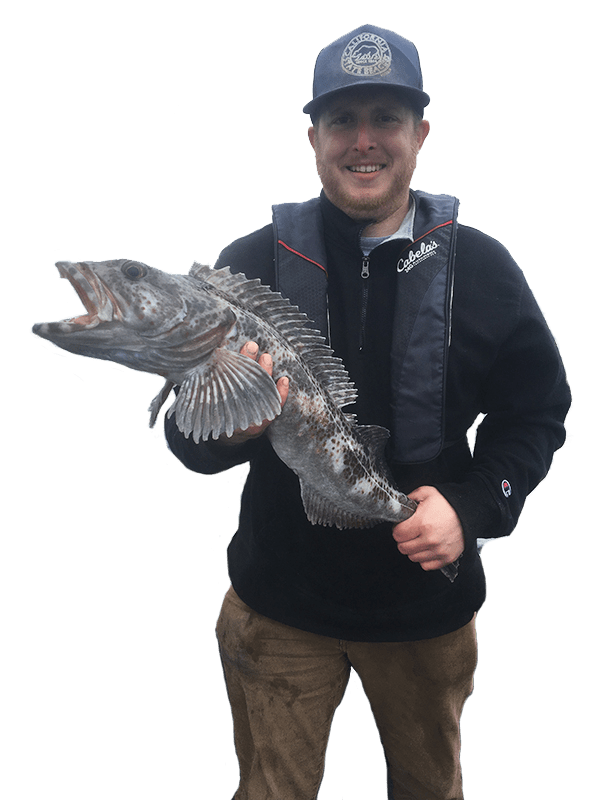The History of the Great White Sturgeon
When you plan to fish along Oregon, you’ve probably heard about white sturgeon. This is one of the dream species an angler will ever reel in and for many great reasons.
The white sturgeon is the largest gamefish in Oregon and one of the largest freshwater fish around the world. There are reports of anglers catching and releasing sturgeon of over ten feet in the Columbia River. We’ve also heard of people catching white sturgeon up to a whopping 20 feet long!
Learn more about this monster fish and check out the history of the great white sturgeon here.
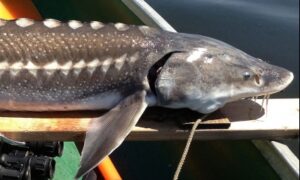
About White Sturgeon
Here are a few fun facts about this monster fish we know as the white sturgeon:
- White sturgeon are huge, with the biggest one on record caught in 1898. It weighed over 1,500 pounds! They can live to be over a century old, growing continuously throughout their lives.
- The white sturgeon’s skin is covered in bony plates rather than scales. These are called scutes and are very sharp on younger fish.
- Similar to sharks, sturgeon skeletons are made of cartilage rather than bone.
- Sturgeon has a suction cup-like mouth, eating mollusks and small invertebrate at a young age. As they grow into adults, they feed on fish.
- These fish are born in freshwater and while they can enter seawater, this isn’t necessary to complete the lifecycle. Their spawning season will depend on the water temperature, water currents, and day length. Females can release up to 3 million eggs, with fertilized eggs sticking to the river bottom once they come into contact with it.
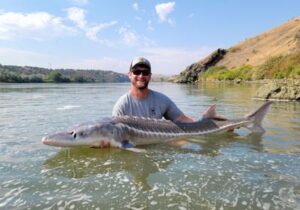
History of the Great White Sturgeon
Sturgeons are one of the most ancient animals in oceans and rivers today, swimming in the bottom waters since the Early Cretaceous period. That was over 100 million years ago! Thanks to the fish’s shark-like cartilaginous skeletons, bony diamond-shaped plats, and scale-less skin, these fish swam around even way before the evolution of the T-Rex.
During the European Contact, sturgeon heavily populated North American waters. But just like lobster, early settlers ignored this species. This may be due to the species’ appearance and unfamiliarity with the sturgeon. Back then, they also didn’t know how good sturgeon’s eggs were when salt-cured.
Ross Cox, an Irishman who traded for furs in the Pacific Northwest, wrote about his experience with sturgeon in the early 1800s. He described it as a royal fish at the mouth of the Columbia. Back then, you would find plentiful prime sturgeon from August to September in great sizes. Some of them were 11 feet long and weighed a whipping 300-400 pounds! These weren’t even close to the biggest sturgeon recorded today, with the biggest one (as we know) being almost 14 feet long and over 1,500 pounds.
Despite sturgeon’s abundance back in the day, European and American traders didn’t consider the fish as a significant product. The first commercial fisheries focused more on salmon and even saw sturgeon as monstrous trash that got in the way of business!
It was only in the 1880s that the demand for sturgeon grew in Columbia, which was also when businessmen brought icing technology to the area. Fishermen started capturing sturgeon so aggressively that the species was almost rendered extinct along the river within two decades!
Fast forward to today, recreational and commercial fishermen are eager to land their hands on a huge, prehistoric fish. That said, they aren’t allowed to take them home, as they are now considered catch-and-release, no matter the size.
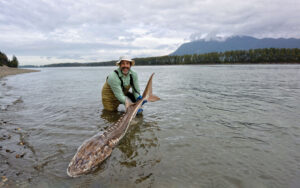
Tips on Catching Great White Sturgeon
Now that you learned more about the history of the great white sturgeon, you’re probably interested in trying to reel one in for the bragging rights! Here are a few tips you can follow to achieve that:
- If you’re looking at where to target white sturgeon, we recommend the Columbia River, Willamette River, Oregon Coast, Nehalem Bay, Tillamook Bay, Yaquina Bay, Siuslaw Bay, Winchester Bay, and Coos Bay. The Columbia River and Oregon Coast are the most popular sturgeon fishing spots.
- A sturgeon’s diet consists of fish, eels, worms, clams, and other similar. When packing baits, bring and use smelt, shad, squid, and shrimp, among others. Go for the smellier ones. Live and cut bait is the best way to lure sturgeon.
- Sturgeon don’t usually move through fish ladders and over waterfalls as steelhead and salmon do. Rather, they would move between freshwater and salt water to search for food and spawning.
- Since white sturgeon are heavily regulated, it’s crucial to stay updated on ODFW’s state regulations, as this can change regularly. Fortunately, white sturgeon numbers are seeing modest improvements, with the ODFW opening sturgeon retention days recently along the lower Columbia River system.
- When casting a line for sturgeon, you will want to rig up your bait fish and cast out. This is because sturgeon would feast on slow-moving and freshly-killed pray, making the fishing technique fairly simple.
- When fishing for sturgeon, you can use the standard 6-9′ rod, provided it is lightly tipped. Even if sturgeon are huge and powerful, they are actually light biters. Your rod must also be able to hold at least 80 pounds and run enough line. Opt for 250 years of the line.
- Choose hooks carefully. Because they have leathery thick mouths, you’ll want to use something that can penetrate them, like circle and octopus hooks.
- Besides the appropriate fishing gear and equipment, you must have a Columbia River Basin endorsement when fishing for white sturgeon, steelhead, and salmon in the Columbia River. You will also need the appropriate fishing license and tags.
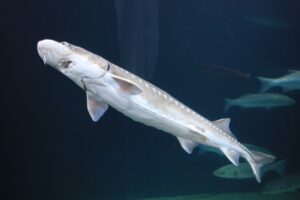
Wrapping It Up
We hope you learned a lot about the history of the great white sturgeon from our article! If you would like to target this unique, humongous species on your next fishing trip in Oregon, contact us now. We offer excellent charter services in various areas of Oregon for your fun and safety.
Schedule your Oregon Fishing Charter Today!
